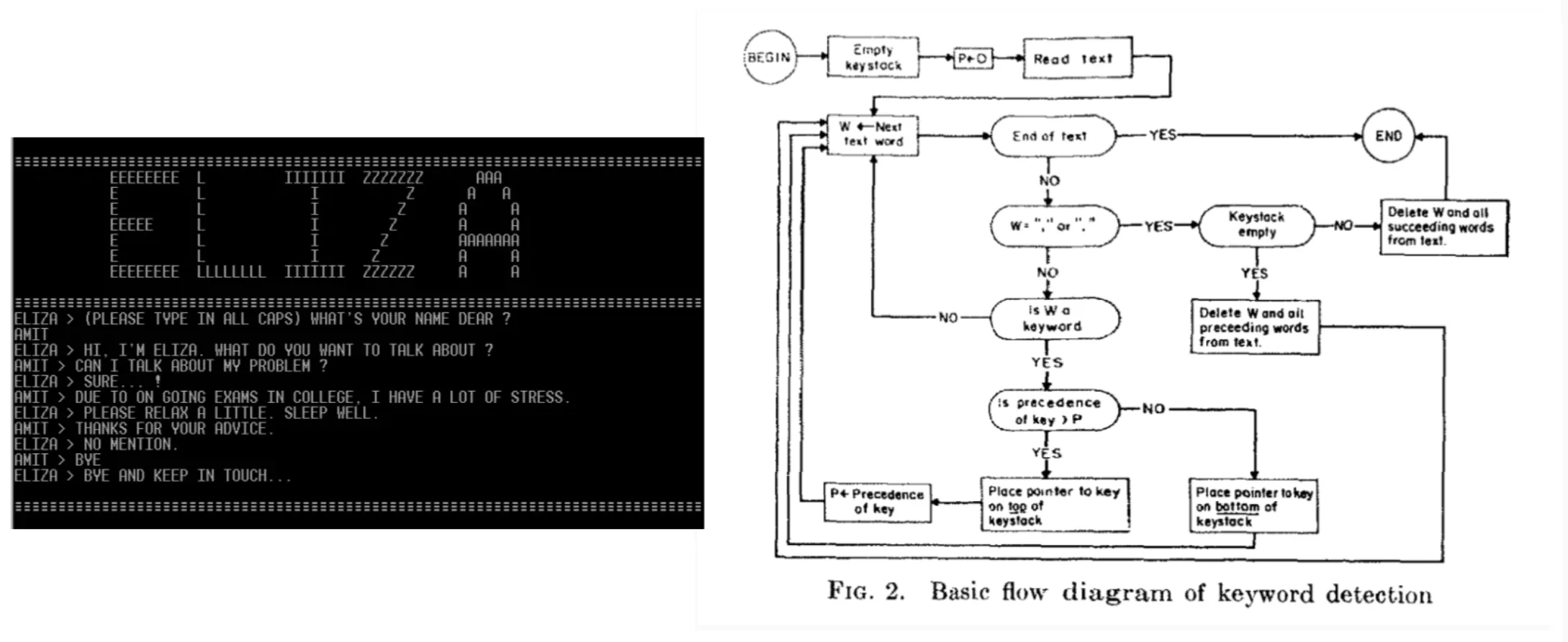

🇪🇸 Spanish version of this post: “¿Qué es la IA Conversacional?”.
Conversational AI includes technologies that enable natural interactions with computers, such as virtual assistants and chatbots. Its development has evolved from ELIZA, the first chatbot, to advanced models like ChatGPT. While it presents opportunities to improve communication and accessibility, it also raises ethical and privacy challenges that must be addressed as it advances.
The Conversational AI umbrella#
Conversational AI is the set of Artificial Intelligence-based technologies that allow us to maintain a dialogue with any computer. It is the technology of conversations.
We often use the term Conversational AI to refer to virtual assistants or chatbots. The goal is to build systems with which people can interact by voice and/or writing, through a conversation as if we were talking to a person. From answering simple questions to performing more complicated tasks, conversational AI makes interaction with technology more natural.
Under the conversational AI umbrella, we find technologies such as natural language processing (NLP), which allows machines to extract meaning from language. Machine learning (ML) algorithms and deep learning (DL) architectures are also employed to improve AI systems’ ability to understand the intention of the person they’re talking to, to decide what type of behaviour is most appropriate at each point in the conversation, and to generate responses based on certain data. Additionally, both speech recognition and speech synthesis are used to interact with people through speech.
 Diagram showing the intersection of NLP, ML and DL within Conversational AI. Source: Nieves Ábalos.
Diagram showing the intersection of NLP, ML and DL within Conversational AI. Source: Nieves Ábalos.
Is the term new?#
The truth is that although it’s a set of diverse technologies that have evolved significantly in the last decade, and are now booming due to Generative AI which focuses on language models and chatbots like ChatGPT, the term “Conversational AI” is not a new concept.
Conversational AI is strongly linked to the term “Artificial Intelligence”, a term coined by John McCarthy along with other researchers like Minsky or Shannon in 19551, but the idea of machines that behave like people conversing and thinking predates this. Alan Turing, in 1950, published an article titled “Computing Machinery and Intelligence”2, where he explored the possibility of creating thinking machines.
“I believe that at the end of the century the use of words and general educated opinion will have altered so much that one will be able to speak of machines thinking without expecting to be contradicted.” - Alan Turing, 1950.
For Alan Turing, natural language conversation was the interface to validate certain intelligent capabilities of machines, such as the ability to think. His most significant contribution was the proposal of the “Imitation Game”2 or “Turing Test”, which he proposed as a method to determine whether a machine could “think”. The test consists of a machine maintaining a conversation indistinguishable from one with a human being. If the machine managed to make its interlocutor think it was a person, Turing argued it was reasonable to say the machine was “thinking”. This simplified approach allowed him to argue convincingly that a “thinking machine” was at least plausible.
These contributions laid the foundations for the concept of conversational AI and the debate about the possibility of machines that can think and communicate like people.
 Imagining Alan Turing talking to Alexa. Image generated by Nieves Ábalos with AI (Midjourney v6).
Imagining Alan Turing talking to Alexa. Image generated by Nieves Ábalos with AI (Midjourney v6).
ELIZA, the first chatbot prototype#
Joseph Weizenbaum played an important role in the initial development of artificial intelligence, especially in the field of conversational AI. His most relevant contribution was the creation of ELIZA3, one of the first “chatbots” or programs that worked with natural language.
Weizenbaum developed ELIZA while working at MIT, between 1964 and 1966. ELIZA, which simulated a psychotherapist with empathetic listening by reflecting the user’s statements and asking questions based on them, was one of the first programs capable of using techniques to detect keywords in conversation and use them to maintain a conversation with people.
 Conversation with ELIZA and keyword detection flow. Source: Weizenbaum (1966) 3
Conversation with ELIZA and keyword detection flow. Source: Weizenbaum (1966) 3
ELIZA demonstrated how a relatively simple program, using the previously mentioned concepts to ask questions, could create the illusion of understanding and empathy. In fact, many users attributed human qualities to the program, despite its functioning, and led Weizenbaum to reflect on the ethical implications of AI and the human-machine relationship in his book “Computer Power and Human Reason” 4, where he expressed concerns about its use in areas requiring human understanding and empathy.
His work with ELIZA was pioneering in conversational AI and remains relevant in current discussions about chatbots and virtual assistants. His ethical reflections have influenced the responsible development of AI and the consideration of its social and psychological implications.
Don’t miss my latest articles. Subscribe to my newsletter “Fallback Intent” (in Spanish).
Conversational AI now#
Conversational AI has come a long way in the last decade, transforming how we interact with technology and redefining the boundaries of what’s possible in human-machine communication.
In recent years, the development of conversational AI has experienced three waves that have expanded the technology and use of chatbots, voice assistants, and currently language models, with several companies standing out in this field. These waves have also grown and diminished our expectations of them.
This technology is rapidly changing our digital world. From leading technology companies like Apple with Siri, which democratised voice virtual assistants on our mobile phones in 2009, to Amazon launching Alexa in 2015 making these voice assistants enter our homes and help us control devices, to the advances of recent years with OpenAI launching ChatGPT in November 2022, generating an unprecedented impact on the perception and massive use of conversational AI, reaching 1 million users in five days after its launch, and not forgetting the impact of Anthropic, Google, Microsoft and Meta in the race for applications and large language models.
However, as we move forward, we must maintain a balance between innovation and ethical responsibility. The future of Conversational AI promises great potential to improve education and accessibility, but also poses important challenges in terms of privacy, security and impact on people. As this technology continues to evolve, it will be key to work on harnessing its potential while mitigating its risks.
The road ahead promises to be the next great transformation of the society we live in.
Can I help you with this topic? In addition to my consultancy services, I offer training, talks, and mentoring. Contact me by email.
Footnotes#
-
McCarthy, J., Minsky, M. L., Rochester, N., Corporation, I. B. M., & Shannon, C. E. (1955). A PROPOSAL FOR THE DARTMOUTH SUMMER RESEARCH PROJECT ON ARTIFICIAL INTELLIGENCE. http://jmc.stanford.edu/articles/dartmouth.html ↗ ↩
-
Turing, A. M. (1950). Computing machinery and intelligence. Mind, LIX(236), 433-460. https://doi.org/10.1093/mind/LIX.236.433 ↗ ↩ ↩2
-
Weizenbaum, J. (1966). ELIZA—a computer program for the study of natural language communication between man and machine. Commun. ACM, 9(1), 36-45. https://doi.org/10.1145/365153.365168 ↗ ↩ ↩2
-
Weizenbaum, J. (1976). Computer power and human reason: From judgment to calculation. Freeman. https://archive.org/details/computerpowerhum0000weiz_v0i3 ↗ ↩